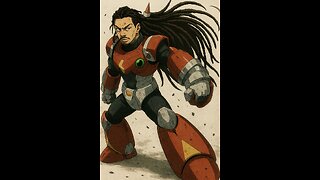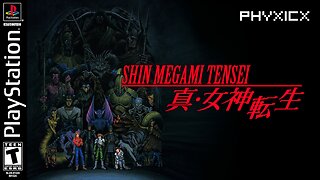Premium Only Content

These 3 Passages Reveal WHO ACTUALLY FORMED the New Testament Canon
How was the New Testament formed?
And when was the canon actually finalized?
Many suggest it wasn’t until the 4th century AD that certain councils and committees finally decided which books were in and which books were out.
But is that true?
Well, the bible actually shows that the New Testament canon had been determined long before by the Apostles themselves.
So in this video, we will link together three passages to discover how the New Testament was being formed and finalized as early as the first century.
Be sure to watch to the end because understanding how the canon came to be is what gives us confidence that the right books were chosen and the imposters were left out.
And don’t just believe us, but look up these verses and prove it for yourself from the pages of your own Bible.
Scripture #1: 2 Peter 3:14-16, which says…
“Therefore, beloved, looking forward to these things, be diligent to be found by Him in peace, without spot and blameless; and consider that the longsuffering of our Lord is salvation—as also our beloved brother Paul, according to the wisdom given to him, has written to you, as also in all his epistles, speaking in them of these things, in which are some things hard to understand, which untaught and unstable people twist to their own destruction, as they do also the rest of the Scriptures.”
First, it’s important to note that 2 Peter is Peter’s last letter, written shortly before his execution, and not long after Paul's death. So it was written in the mid to late 60s AD.
And at this time, Peter refers to Paul's writings in a way that indicates that they were complete, mentioning "all" his letters.
And he compares them to “the REST of the SCRIPTURES.”
Peter is clearly defining Paul’s epistles as Scripture, and saying they were on par with the scriptures of what is called the Old Testament today.
This shows that Paul’s letters were already accepted as the inspired Word of God by the writing of 2 Peter and before the destruction of the second temple in 70 AD.
Scripture #2: 2 Peter 1:12-17
Beginning in verse 12, the Apostle Peter writes…
“For this reason I will not be negligent to remind you always of these things…. Knowing that shortly I must put off my tent… I will be careful to ensure that you always have a reminder of these things after my decease.”
Creeping into the Church around this time were corrupt men (Jude 4) and false teachers (2 Peter 2:1), even some imposters who were writing false epistles in the name of the Apostles (2 Thess. 2:1-2).
These individuals were distorting and perverting the truth.
So Peter, aware of his soon-approaching death, knew that the only way he could ensure a permanent record of what he had taught was to leave behind writings officially designated as Holy Scripture.
Peter was compiling a permanent record for the Church to “always have a reminder.”
So it was the Apostle Peter who began putting together the books of the New Testament.
This would’ve included all the writings of Paul, which, as we’ve already explained, were defined as Scripture at this time (2 Peter 3:14-16).
And this also included 3 of the 4 gospels. Paul even quotes Jesus’ words from the gospel of Luke, calling it scripture—1 Timothy 5:18.
Now, beginning in verse 16, Peter abruptly switches from using the first person singular, “I,” to using "we," the first person plural. He writes,
“For WE have not followed cunningly devised fables, when we made known unto you the power and coming of our Lord Jesus Christ, but were eyewitnesses of his majesty. For he received from God the Father honor and glory, when there came such a voice to him from the excellent glory, ‘This is my beloved Son, in whom I am well pleased.’ And we heard this voice which came from heaven when we were with Him on the holy mountain.”
So who is the “we” Peter is referencing?
Well..
This person would be sound in doctrine, not following “cunningly devised fables.”
He would’ve been preaching the gospel of the Kingdom of God as one who “made known the power and coming of our Lord Jesus Christ.”
And he had to be an EYEWITNESS to Jesus’ majesty with Peter on the holy mountain.
This leaves us with only 1 option, and brings us to…
Scripture # 3: Matthew 17:1-5
“Now after six days Jesus took Peter, James, and John his brother, led them up on a high mountain by themselves; and He was transfigured before them. His face shone like the sun, and His clothes became as white as the light.”
These three were eyewitnesses, in vision, to the majesty of Christ in His glory when they were with Him during the transfiguration.
Peter was referring to either James or John. But he would not have been referring to James, because James had already been martyred when he wrote 2 Peter (Acts 12:2).
So the only other one who saw first-hand Christ’s majesty was the Apostle John.
Peter was explaining in his last letter that "we"—he and John—were the only ones remaining who possessed the "sure word of prophecy" (2 Peter 1:19, KJV).
-
 9:57
9:57
Tomorrow's World Whiteboards - Rumble
10 months agoThe 4th Biblical Holy Day Explained: The Feast of Trumpets (Rosh Hashanah) & God’s End-Time Plan
57 -
 LIVE
LIVE
Rallied
1 hour ago $0.55 earnedWARZONE SOLO CHALLENGES ALL DAY
629 watching -
 27:01
27:01
TheRoyaltyAutoService
7 hours ago $0.68 earnedAnother Shop Replaced The Timing Belt & Fuel Injectors On This Honda Pilot… Now It Has No Power!
3.55K1 -
 LIVE
LIVE
GritsGG
9 hours agoRanked Crim 2! Most Wins 3390+ 🧠
279 watching -
 LIVE
LIVE
IsaiahLCarter
22 hours agoJonah O. Wheeler: In Defense of Reality || APOSTATE RADIO #026
241 watching -
 LIVE
LIVE
Cewpins
3 hours agoSmoke Sesh🔥Gaming???💨420🍃!MJ !giveaway
42 watching -
 LIVE
LIVE
Phyxicx
1 hour agoShin Megami Tensei - Part 5 - 8/13/2025 | Chaos Route | Expert Difficulty
80 watching -
 1:59:32
1:59:32
vivafrei
12 hours agoEp. 277: Russia Peace Talks! Trump D.C. Takeover Leads to Lawsuit! Heat Wave Lawsuit? AND MORE!
61.6K32 -
 LIVE
LIVE
Nerdrotic
3 hours ago $3.48 earnedTransient Lunar Phenomenon: Deeper into the Mysteries of the Moon | Forbidden Frontier #112
537 watching -
 2:58:44
2:58:44
Barry Cunningham
1 day agoBREAKING NEWS: PRESIDENT TRUMP ABSOLUTELY TROLLS THE MEDIA! BIG WEEK AHEAD!
66.5K86